
- •Table of Contents
- •Introduction
- •The 5 Dramatic Throughlines
- •The 6 Conflicts
- •The 21 Genres
- •The Replay
- •Fate
- •The Parallel
- •The Episodic
- •The Journey
- •Interactive
- •Metafiction
- •The Slice of Life
- •Introducing the 55 Dramatic Situations
- •Situations 1 & 2
- •Situations 3 & 4
- •Situations 5 & 6
- •Situations 7 & 8
- •Situations 15 & 16
- •Situations 17 & 18
- •Situations 43 & 44
- •Situations 45 & 46
- •Situations 47 & 48
- •Situations 49 & 50
- •Situations 51 & 52
- •Research
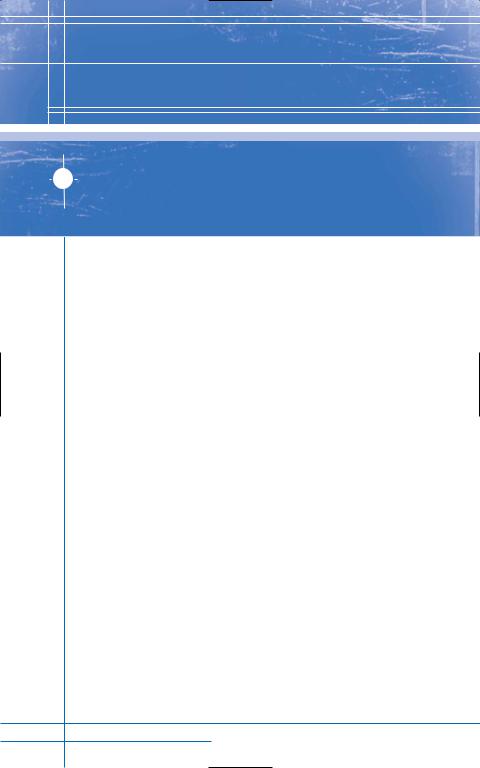
The 21 Genres
“There was never yet an uninteresting life. Such a thing is an impossibility. Inside of the dullest exterior there is a drama, a comedy, and a tragedy.”
–MARK TWAIN
Since Lady Murasaki Shikibu wrote the first novel The Tale of Genji, around 1000 A.D., literature has been classified into Genres that have consistently changed with the times.
The number of ways in which to classify literature is still growing, so there are no set rules or even categories of Genre that everyone agrees upon. For some, Genre is merely Prose, Poetry, and Drama. For those in Shakespeare’s day there was Tragedy, History, Comedy, Pastoral, Pastoral-Comical, Historical-Pastoral, Tragical-His- torical, and Tragical-Comical-Historical-Pastoral.
Today, film has greatly influenced how we think about Genre, modifying and creating new genres according to this new medium. The mere mention of a “Western” story evokes images of John Wayne and men on horseback. It is likely that in the future there will be a new set of Genres according to the influence of video games, interactive fiction, and independent filmmakers.
Daniel Chandler in Introduction to Genre Theory states:
How we define a genre depends on our purposes. For instance if we are studying the way in which genre frames the reader’s interpretation of a text then we would do well to focus on how readers identify genres rather than on theoretical distinctions. Defining genres may be problematic, but even if theorists were to abandon the concept, in everyday life people would continue to categorize texts.
When selecting a Genre for your story, think about what it is you want to say or what it is you want your reader to feel. Also think about what you like to read yourself. Is there a specific Genre you love and know very well? Go with what you know if you are just starting out; otherwise, challenge yourself a little and try a new Genre.
20 Story Structure Architect
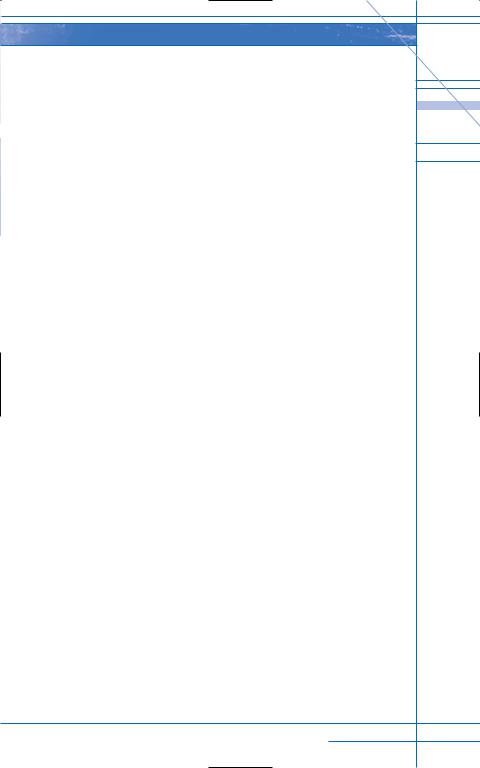
Try your story idea in several different Genres and see if one gives you more excitement or more possibilities than another one does. After all, any of these Genres can be used with any of the structures. If you have experience writing Westerns, for example, you may want to try your hand at a mystery instead. In a typical Western, the hero’s goal is to protect his land and family and seek revenge against those who take it away from him. What if the hero becomes a detective instead, searching for the whereabouts of his loved ones? The focus has switched from revenge to discovery.
If you want to combine Genres, by all means do so. Genre is subjective and open for revision and reclassification at any time. You could, in fact, create a mystery set in the West, combining the two Genres above. In this case, the hero above searches for his loved ones’ whereabouts while also seeking revenge.
Now that you have selected a Dramatic Throughline and Conflict Type, you need to think about the type of Genre you want to work in.
The following are the main contemporary Genres:
ACTION. Action stories have a lot of activity, effects, and, well, action. They are fast paced and designed for pure audience escapism. They are primarily plot driven. Some subcategories are:
•SUPERHERO: The hero has exceptional power or prowess.
•UNDERDOG: The hero is misjudged and not thought to have power.
•REVENGE: The hero wants revenge against those who have wronged him.
•SAVIOR: The hero must save everyone.
ADVENTURE. Adventure stories are just that—adventurous, but they are also filled with risk and the unknown. When someone skydives, he is taking a chance, and that is what creates a thrill. Adventure stories are all about seeking something outside of ordinary experience that can be hazardous. Some subcategories are:
•EXPEDITIONS: The hero is venturing into the unknow.n
•TREASURE HUNTS: The hero is searching for something, usually fortune.
•DISCOVERY: The hero finds something thought impossible to find or something thought impossible to prove the existence of.
CHILDREN. Children’s books are the same as adult books when it comes to Genre. For example, there are mystery children’s stories (“What is that monster in the woods?”). And there are journey children’s stories (“Will Billy find his way home?”). The difference is that you are writing for a specific audience at a specific reading and comprehension level. Children see the world much differently than adults. Some subcategories are:
The 21 Genres |
21 |
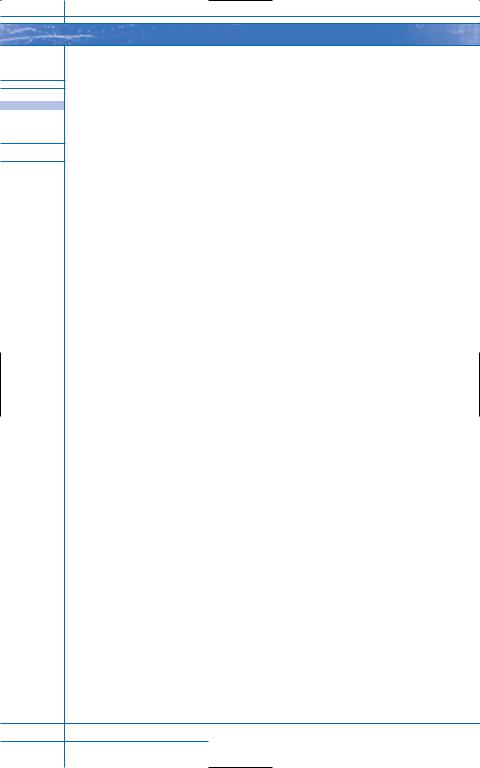
•SPECIAL BEINGS: The hero meets a wolf, the tooth fairy, Santa Claus, or any other type of unusual character you can come up with.
• LESSONS TO LEARN: The hero learns a moral or other type of lesson.
•ACCOMPLISHMENT: The hero did something all by herself.
•ANIMALS: All the characters can be animals as in an animal fantasy story.
COMEDY. Comedies are subjective and as varied as Who Framed Roger Rabbit and Seinfeld. What one person thinks of as funny may be completely different from what another person thinks is funny. The writer of this Genre must be willing to take risks because, as most stand-up comics will attest, it is a tough business. The audience may not laugh at all. Comedies usually exaggerate situations, language, and characters for effect. Some subcategories are:
•SATIRE: Irony, sarcasm, or caustic wit used to attack or expose.
•PARODY: A mockery or work that imitates the style of another for comic effect or ridicule.
•FARCE: A work in which improbable plot situations and exaggerated characters are used for humorous effect.
•DARK COMEDY: A story with disturbing elements and morbid or grimly satiric humor.
•SLAPSTICK: Comedy of physical action; i.e., hero steps on the end of a rake and gets hit in the head.
•SCREWBALL: Impulsively whimsical or foolish or a totally unsound crazy scheme.
CREATIVE NONFICTION. This is a hybrid of literature and nonfiction that is based on true-life events. A true story is dramatized, especially when there are gaps in the story that need to be filled. The nonfiction elements are based on facts, and the fiction elements are based on setting, scene, place, and bringing out characterization. Some subcategories are:
•TRUE CRIME: Narrative follows the criminal’s or the detective’s perspective.
•JOURNALISM: Narrative reports the news through creatively telling the events as they happened rather than giving just the facts; a more personal look into the events.
•AUTOBIOGRAPHY: Narrative is the history of your life and accomplishments.
•BIOGRAPHY: Narrative is the history of another person’s life or accomplishments.
CRIME. Crime stories are centered on characters that have done something wrong or are at least accused of doing so as the real criminal
22 Story Structure Architect
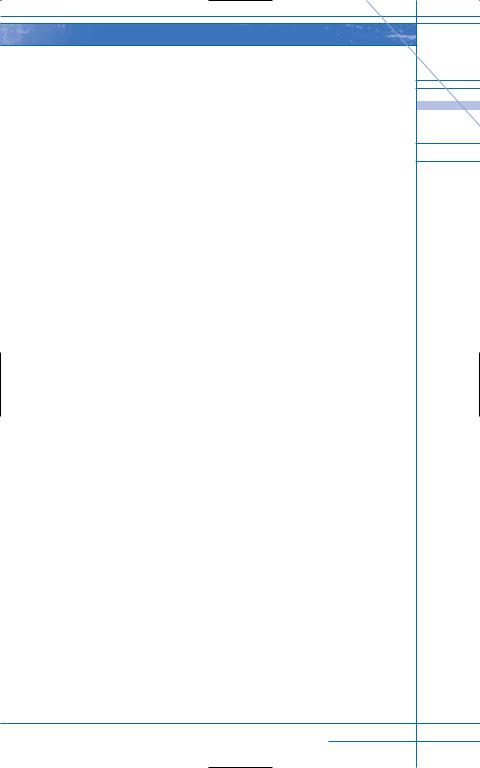
gets away. The criminals feel they operate outside the law and are entitled to what they have stolen or justified in what they have done.
DIARY/JOURNAL. These stories have first-person point of view accounts given in diary entries written by the main character. These accounts are presented as being the true thoughts of the main character. Think Robinson Crusoe and Bridget Jones’s Diary. The main character talks to the reader firsthand through her diary. The diary can take up the entire story or just be small entries sprinkled throughout the story.
DRAMA. Dramas are serious stories that portray realistic characters in realistic settings. They can also be very over-the-top, exaggerating the seriousness of the problem and the character’s reactions to those problems. Some subcategories are:
•REALISTIC: The drama is a very real and everyday type.
•OVER-THE-TOP: Exaggerated problems and reactions to them are presented; characters may be “drama queens.”
FANTASY. Fantasies transcend the bounds of human possibility and physical laws. Magic, myth, and impossibilities abound. Other worlds are explored, characters can have supernatural powers, and the laws of physics are challenged. Anything is possible. Just be careful to define the laws of the world you are creating and stick to them. The reader will believe the hero can fly faster than a speeding bullet if you define why and how he does this. Never contradict that explanation or you will lose your reader.
HISTORICAL/EPIC. Historical fiction mixes detailed historical research with imagined characters. Think Gone With the Wind. This fiction may be turned upside down if the author wishes to imagine an alternate series of events that change history. Epics are often historical in nature and cover a large expanse of time set against a rich, vast setting.
HORROR. Horror stories are meant to frighten the audience. Challenging common fears works best here because everyone can relate to them, such as being left all alone in the dark, having a car break down in the middle of the night on a deserted street, or getting into an elevator with a scary-looking man. Some subcategories are:
•VIOLENCE: Many horror stories have violence or the threat of violence.
•DARK ASPECTS OF LIFE: Other types of horror expose the darker, more sinister aspects of human nature.
•PSYCHOLOGICAL: This type of horror plays with the reader’s mind. Think Dial M for Murder. It is the helpless situation that evokes fear.
The 21 Genres |
23 |
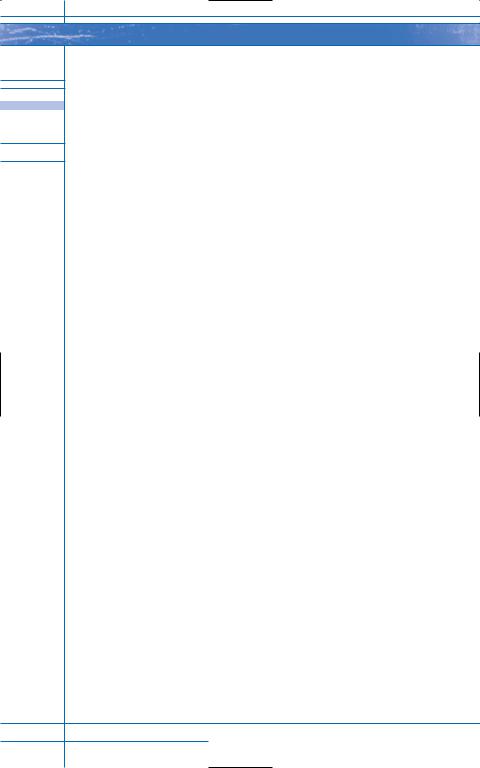
INSPIRATIONAL. Inspirational writing is meant to inspire readers into a new way of thinking, acting, or feeling. The goal is to teach the reader something positive about life and leave her feeling inspired by the end of the story. Some subcategories are:
•RELIGIOUS: This supports a particular faith and the teachings of that faith when inspiring others. Think A Course in Miracles.
•SPIRITUAL: This is a neutral support of a person’s spirituality without the use of religious elements. Spirituality is an individual way of being and living without dogma. Think Chicken Soup for the Soul.
•MOTIVATIONAL: This motivates a reader without religious or spiritual elements; it just uses facts. Think Personal Power by Tony Robbins.
MUSICAL. Musicals are usually films and plays that use song and dance to convey significant parts of the story. This has yet to be explored by novelists but perhaps some metafictional authors will one day try this. (See section on Metafictional Structure in Part 2.)
Stuart Ostrow states, “The greatest question musical dramatists must answer is: Does the story I am telling sing? Is the subject sufficiently off the ground to compel the heightened emotion of bursting into song? Will a song add a deeper understanding of character or situation?”
MYSTERY. In a Mystery, a character needs to answer a question that solves something that is unknown—Where is the missing child? Who killed the CEO? Who stole the money? This Genre is heavy on the rewriting stage, as once the answer is found, you have to go back and make sure clues are planted. Some subcategories are:
•HARD-BOILED: These are gritty “noir” stories with grim details and tough, hard-nosed detectives.
•COZY: Country houses and villages, with peaceful and genteel exteriors, are usually the setting. There is minimal violence and everything is nicely wrapped up by the conclusion.
•POLICE: The protagonist is usually on the police force and the crime is solved by using the forces’ resources and procedures.
•DETECTIVE: The protagonist is usually a licensed private investigator or ex-cop who works alone or with a larger agency.
•AMATEUR DETECTIVE: Nosy neighbors and inquisitive civilians get involved in an Amateur Detective story. Sometimes they are meddlers.
SUSPENSE/THRILLERS.Thrillers contain intense excitement and anticipation. The audience is left in the dark most of the time, figuring things out as the characters do. Who is just around the corner? Will the hero get caught? Who is lying? Will the car keep running long enough for the hero to make it home?
24 Story Structure Architect
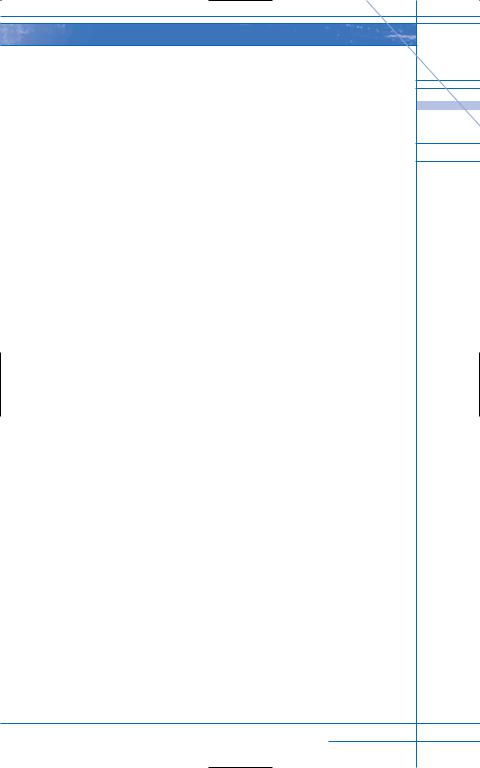
GOTHIC. These are stories of the macabre that invoke terror. Gothic stories feature terrifying experiences in ancient locations such as castles, crypts, and dungeons.
Gothic tales have tended to examine gender roles. In many Gothic stories there are very powerful male characters (such as Dracula) that “liberate” female characters, taking them out of the domestic sphere. In other Gothic tales the female lead has to deal with a very dangerous, alpha-male type of character. Contemporary Gothic tales place the female character in a more powerful role.
POLITICAL. Also considered social writing, political stories make a statement regarding social or political views or ways of being. The primary focus of the work supports a social or political view or critiques it. There is an element of exploration within them, as the writer is not trying to force-feed the reader an agenda. Herman Melville, Jack London, Norman Mailer, Ralph Ellison, Toni Morrison, and Margaret Atwood have grappled with this type of Genre, balancing radicalism and art.
PERSUASIVE. This type of story is aimed at converting the reader to a certain belief or idea. All that does not support the belief or idea is discarded. Often these works are one-sided and do not have any element of exploration within them. If a certain type of person is disliked, the characters that represent that type are stereotypical and undeveloped.
ROMANCE. Romances deal with love and affairs of the heart. The characters are often passionate, with unfulfilled desires and dreams. Two characters meet, fall in love, and try to form a bond against all odds. Some subcategories are:
•CONTEMPORARY: Stories are set in the present day.
•FANTASY: Stories deal with supernatural themes.
•HISTORICAL: Stories take place during a specific time period with all the clothing, mores, and events of that period.
•INSPIRATIONAL: Stories inspire the reader and evoke hope for love.
•REGENCY: Monarchs, rulers, and kings abound.
•ROMANTIC SUSPENSE: Elements of suspense drive the romance forward.
•TIME TRAVEL: One character travels across time to meet the other one.
•PARANORMAL: One character lives in regular reality while the other character has paranormal abilities of some sort.
•RELIGIOUS: The love story is governed by religious rules and customs.
•MULTICULTURAL: Characters of different cultures are brought together, or characters from a nondominant culture are explored in depth.
The 21 Genres |
25 |
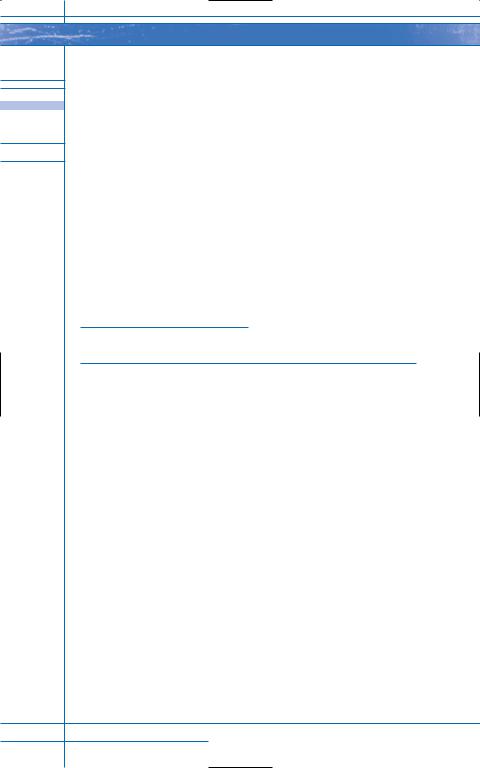
SCIENCE FICTION. Science Fiction stories are based on new or futuristic technological or biological advancements. Inventions abound, whether it’s a new type of law, as in Minority Report, or a new way to travel through space. This Genre has the most fun with the “What if?” question writers love to ask. Anything is possible here. It just has to be made believable or at least probable. Set up the rules of the world you are creating and stick to them. Some subcategories are:
•SUPERNATURAL: Stories include gods/goddesses, ghosts, miracles, aliens, vampires, monsters, demons, psychics, angels, fairies, unusual powers and abilities.
•REALISTIC: Stories take normal everyday situations and twist them into a shocking conclusion.
WESTERN. Westerns come mainly from American writers and the American film industry. They involve settings in the Wild West, with a feeling of the open range. Westerns have themes of honor, redemption, revenge, and finding one’s identity or place in life.
Questions to Consider
When Choosing Genres:
•What Genres do you enjoy reading?
•Will you try writing in different Genres once you are familiar with one?
•Are there any Genres you don’t like? Why?
•Are there other Genres not covered here that you would like to write about? (Look up information on the on the Internet at www.dogpile.com, a great resource for writers.)
•Will you combine Genres once you have a story or two under your belt?
26 Story Structure Architect
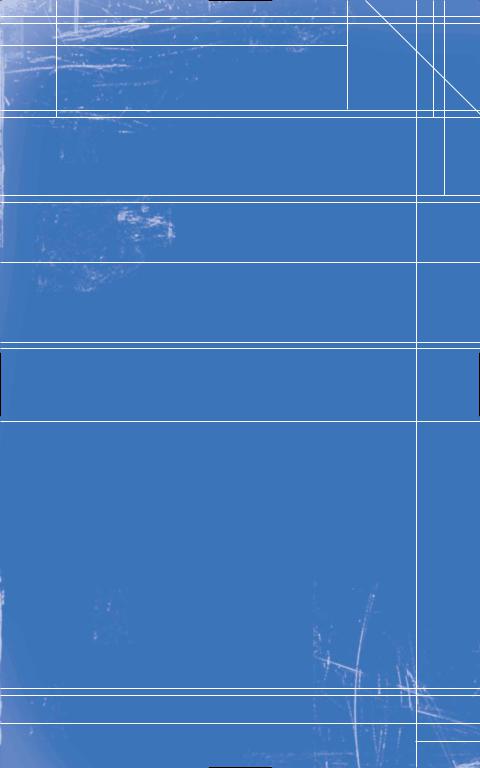
Part 2 |
BUILDING
THE
STRUCTURE
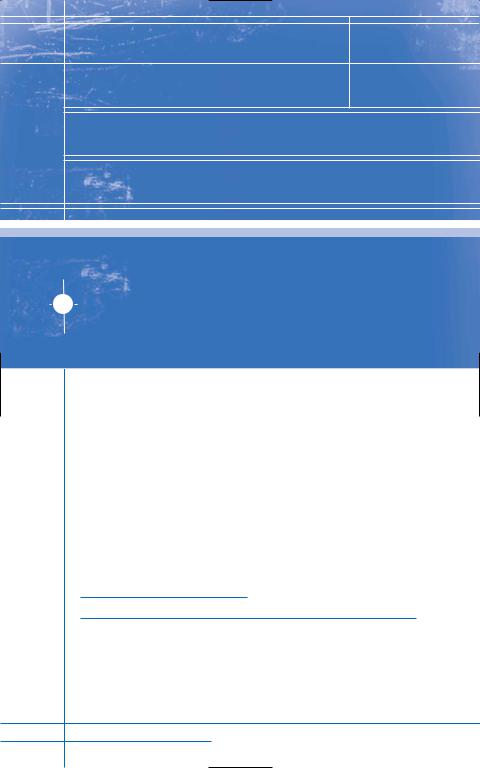
How to Use
the 11 Master
Structures
“A narrative is like a room on whose walls a number of false doors have been painted; while within the narrative, we have many apparent choices of exit, but when the author leads us to one particular door, we know it is the right one because it opens.”
– JOHN UPDIKE
Now that you know your Dramatic Throughline, Conflict, and Genre, you need to decide what type of Structure you want to use for your story.
In the following chapters the 11 Master Structures are outlined and explained with corresponding story development and examples as well as compared to Traditional Structure.
First I will outline the Traditional Structure model. Then as you read each of the corresponding chapters on Structure, you will see how they deviate from this traditional model. Once you understand how Traditional Structure works, you can then break that model to create any number of creative storylines that will help you stand out from the rest of the writers out there.
Traditional Structure
Traditional Structure has a clear beginning, middle, and end that happen in a clear three-act sequence. Act I is the Setup, Act II is the Development, and Act III is the Climax and Resolution. There is usually a Turning Point at the end of Act I and Act II to propel the story forward:
28 Story Structure Architect
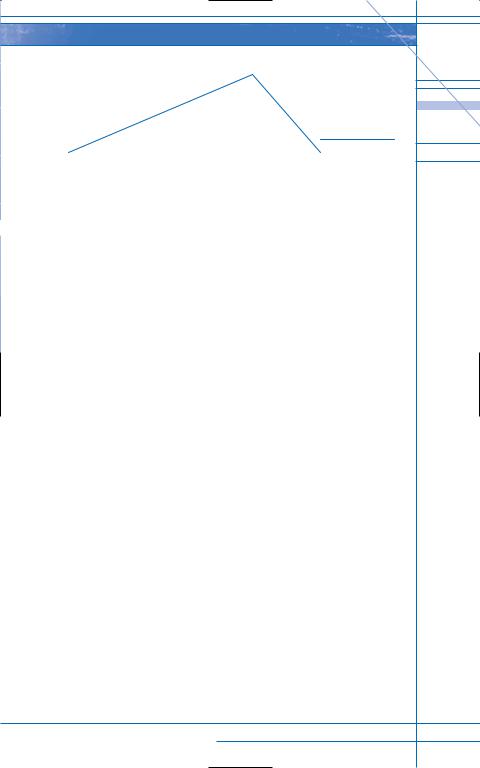
Act I |
Act II |
Act III |
ACT I TRADITIONAL ELEMENTS
Setup: The setup gives us the direction of the story. It gives all the information needed to get the story rolling as well as defining the story Genre and pacing. For example, if you are writing a comedy, try to work comedy into the Setup to set the stage for the rest of the story. (Mood and Hook below are part of the Setup in Traditional Structure but may not be in other types of Structure, which is why I have separated them.)
Mood or Tone: According to Dr. Linda Seger of Making a Good Script Great, “In most great films the setup begins with an image. We see a visualization that gives us a strong sense of the place, mood, texture, and sometimes the theme. The first image could be a space battle (Star Wars), street gangs in New York (West Side Story), a woman singing in the mountains (The Sound of Music), or statues of lions that ominously guard a haunted library (Ghostbusters).”
Of course, this is easy enough for screenwriters, but what about novelists? Novelists can find a way to dramatize this in the Setup by paying close attention to setting, place, and character details. Take a look at the opening chapter of any Stephen King novel to see how he does this. If the story is a mystery about a young girl solving a murder case, can she be somewhere that signifies murder or death? Can we first meet her in a cemetery to set the mood?
Hook, Catalyst, or Inciting Incident: This is a dynamic event that draws the reader into the story. The main goal or problem may not be stated just yet, but something happens that peaks interest. It can be an Action (someone is murdered), Dialogue (a character receives a mysterious phone call), or Situation (a character is thrust into a circumstance she may not be able to handle).
How to Use the 11 Master Structures |
29 |
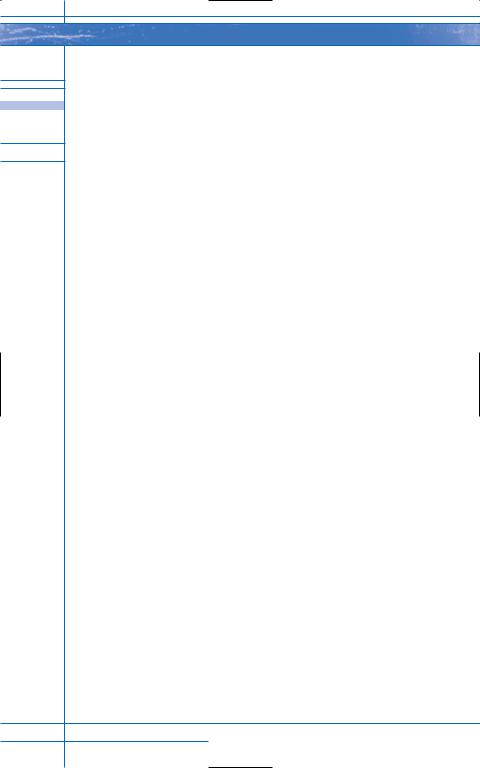
Serious Problem and/or Goal: Why do we care? What is at stake? The problem or goal only has to be important
to the main character. We may not think learning to drive is a big deal, for example, but if the main character is a paraplegic we will feel it is a big deal for him, especially if he has a strong reason to learn. Maybe he will lose custody of his children? Spend a lot of time on this because it is the element that will drive your whole story.
Don’t be afraid to make things bad for your character, and always come up with several different Serious Problems and/or Goals to choose from. Ask yourself, “What is the worst thing that could happen to my character?” Maybe he will lose custody of his mother instead? Or he will be put into a home if he can’t take care of himself properly. Or all of the above. Do a lot of research and you’ll be amazed at how many ideas you come up with. After all, isn’t there technology available to help a man like him drive?
Villain: Who or what opposes the main character? Look over the chapter on Conflict for help. Somehow you need to introduce the Villain. You can show him in a brief scene that conveys his villainous behavior, you can have other characters talk about him foreshadowing his arrival, or you can infer that something bad is coming but is, as of yet, unknown.
Main Characters: All of the Main Characters need to be introduced as soon as possible. It would be great to introduce all the supporting characters as well. Remember to keep your cast of characters to bare minimum. It’s very difficult to follow more than four Main Characters at a time. And please don’t have all their names start with the same letter—Danny, Donald, and Damon can get confusing. Combine several characters into one character when appropriate. Instead of having a lawyer and a chiropractor, have a lawyer/chiropractor. Or a lawyer who handles medical law.
Turning Point: A Turning Point is like a cliffhanger—a moment where the story is taken in a new direction and we wonder what will happen next. A Turning Point may accomplish a variety of functions. Linda Seger says:
It turns the actions around in a new direction, raises the central question/problem again, and makes us won-
30 Story Structure Architect
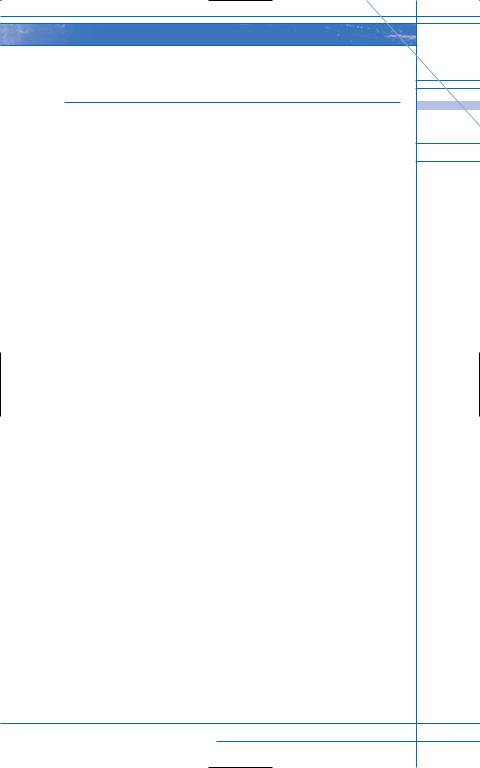
der about the answer. It’s often a moment of decision or commitment on the part of the main character.
ACT II TRADITIONAL ELEMENTS
Problem Intensifies: The actions that drive the story forward are called Action Points, of which there are three types: Barrier, Complication, and Situation.
•Barriers occur when the character tries something and it doesn’t work. The character must change directions or try another approach. Barriers stop the action for a moment as the character decides what to do. For example, the Main Character needs money but her mother won’t lend it to her. What will she do? Maybe she’ll accept the job as a bartender in a strip club even though her feminist sensibilities tell her not to.
•Complication is an action point that doesn’t pay off immediately. It creates anticipation in the reader and builds suspense. For example, the hero is going about his business of catching a killer when all of a sudden the woman of his dreams walks into the room. His reaction to her tells us something will happen between them, but not just yet, and it may complicate things.
•Situation is when one of the Master Dramatic Situations (found in Part 3) happens to a character to move the story forward and add tension. It is usually brought on by another character that is integral to the Main Character’s Serious Problem and/or Goal. The story may take a bit of a detour as the entire beginning, middle, and end of a Situation plays out all at once, or the Situation can be played out in pieces throughout the second act. For example, the Main Character finds out his sister was arrested for narcotics (Discovery of Dishonor of Loved One) and now his entire political campaign is in jeopardy.
Temporary Triumph: The Main Character thinks she has achieved her goal (solved the crime, defeated the villain, or won the contest). But this Triumph is short-lived. A reversal is just around the corner. As we wait for it, the subplot may come in for a moment.
Reversal: Now the Serious Problem and/or Goal worsens. The Triumph is no longer a true Triumph, and the Main Character’s trials are not over by a long shot. In Miss Congeniality the FBI agents think they have captured the mad bomber so they leave, even though Sandra Bullock‘s character has her doubts. She finds out they caught the wrong guy and decides to stay behind alone.
How to Use the 11 Master Structures |
31 |
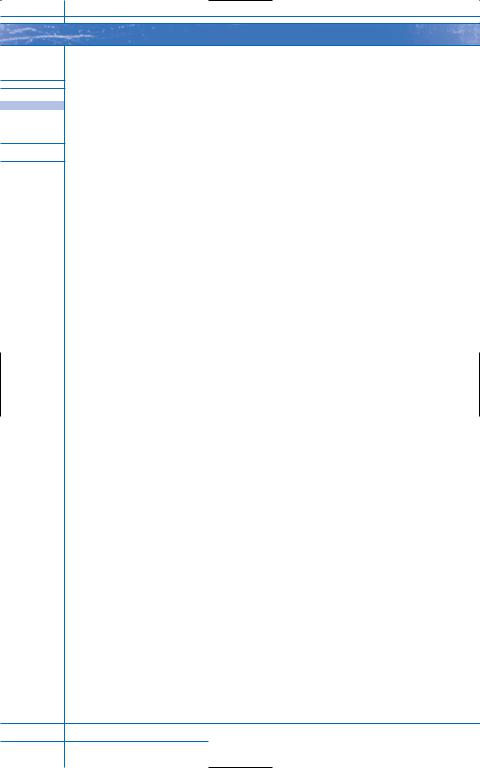
The Reversal can happen several different ways. Some possibilities are:
•New information comes into play.
•A Dramatic Situation happens.
•Another character turns on the Main Character.
•Helpers and friends give up on the Main Character, leaving him alone.
•The meeting place or task the Main Character is going to achieve is changed at the last minute.
•What the Main Character thought was truth is now seen as lies.
•The Villain becomes the good guy and the good guy becomes the bad guy; perhaps your Main Character is after the wrong guy.
Dark Moment: The Main Character fails or at least seems to. Think of action films where the hero has a confrontation with the Villain and barely gets out alive. The problem gets worse for the Main Character and his goal is pushed further out of reach. We wonder if he will ever succeed because it seems as if all is lost.
Turning Point: This accomplishes the same things as the first Turning Point at the end of Act I. The one difference is that the Main Character is usually forced into making a decision that propels this Turning Point. This way he actively creates the events of the story. For example, in The Wizard of Oz Dorothy decides to pull back the curtain and in doing so exposes the Wizard as a fraud. Your Turning Point will be dependent on the type of Dramatic Throughline you are using in your story:
•If you are using the Character Succeeds Throughline, here is where the Main Character decides to keep going.
•If you are using the Character Is Defeated Throughline, here is where the Main Character’s fate gets sealed. He makes the wrong decision.
•If you are using the Character Abandons Goal Throughline, here is where the Main Character gives up on the Goal—for better or for worse. Or she has been lied to and there is no Goal to chase after anymore, or so she thinks. Will she pick up a new Goal? In The Wizard of Oz, Dorothy’s Goal was to meet the Wizard so she could go home. When she meets the Wizard she learns he is a fraud and her Goal seems destroyed, but her true Goal is not to just meet the Wizard; her true Goal is to go home. She can still find a way to do that if she picks herself up and decides to move forward.
32 Story Structure Architect
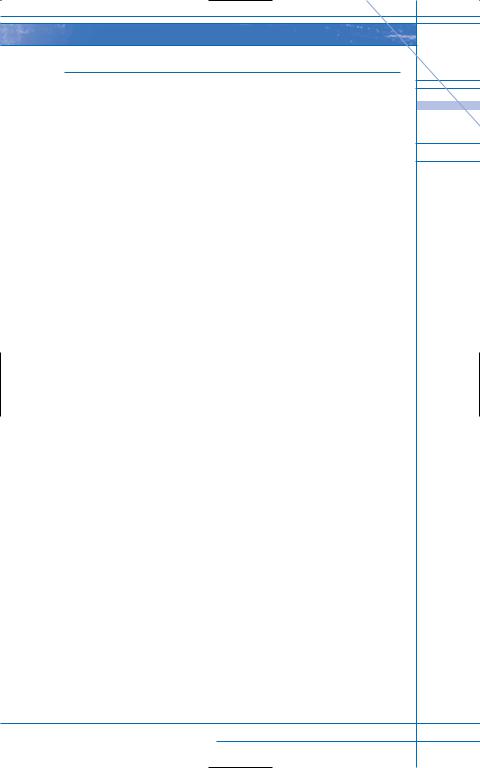
ACT III TRADITIONAL ELEMENTS
Final Obstacle: The Main Character is forced, through the momentum of the Turning Point, to face one last huge obstacle. This obstacle may test his faith, his resolve, his character, and his endurance. He is pushed to the limit not just physically (as is usually the case with comedy) but hopefully mentally and emotionally as well. Again, the final obstacle depends on the Throughline.
•If the Main Character is going to be successful, this is where he sets up the Villain to be destroyed. He may lie and lure the Villain out with deception. He may pretend to give up. He will do whatever it takes to ensure his future success.
•If the Main Character is going to be defeated, this is where he is set up for the Villain to come in and do away with him.
•If the Main Character is going to abandon his Goal, this is where he makes it known to everyone. Or this is where he tries to achieve a new Goal.
Climax: The Main Character comes face-to-face with the Villain. The Problem is either resolved and the Goal is accomplished, or vice versa. This element is usually quick and fast paced.
Resolution: All loose ends are tied up. All subplots are resolved and the Main Character reflects on the events of the story. Has he changed at all? How has the story affected him? What are his attitudes about the events he just went through? The theme can come out again here to show the moral to the story if applicable. Readers like to learn something even when they are being entertained.
The following eleven chapters each outline one of the Master Structures in depth, giving you alternatives to the Traditional Structure outlined in this chapter. Some of these eleven Structures challenge the Traditional Structure more than others, but all are presented in the context of how they deviate from the traditional model. Since most writers know Traditional Structure inside and out, it’s best to use it as a reference point when working with other Structures.
How to Use the 11 Master Structures |
33 |
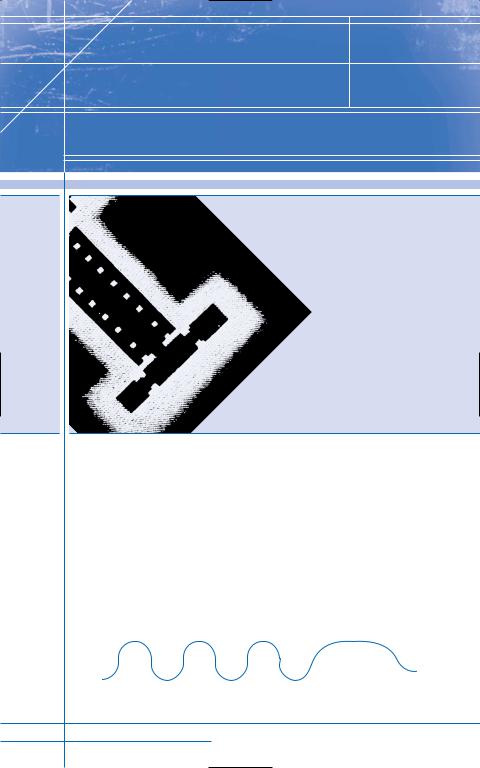
The Roller |
Coaster Ride |
FROM INDEPENDENCE DAY:
MARTY: A countdown … wait, a countdown to what, David?
DAVID: Ah, it’s like in chess … first you strategically position your pieces, and then when the timing is right, you … strike. See? They’re positioning themselves all over the world, using this one signal to synchronize their efforts. In approximately six hours the signal’s going to disappear and the countdown will be over.
MARTY: And then what?
DAVID: Checkmate!
MARTY: (Gasps in fear) Oh my God! Oh my God! I’d better call my brother! I’d better call my housekeeper! I’ve gotta call my lawyer! Ahh, forget my lawyer.
The Roller Coaster Ride is just that—a story that takes the audience on a ride of tension and suspense, never letting up on the gas.
Instead of having one major Climax at the end of the story, as with Traditional Structure, this structure has several Climaxes throughout the story. Each one builds upon the previous one, holding the reader in its thrall until the very end. Slowly the train climbs up the hill. It reaches the peak and then dives toward the ground where it starts uphill once again.
There is still a sense of a clear three-act beginning, middle, and end to it, but the acts themselves have their own mini acts:
Act I |
Act II |
Act III |
34 Story Structure Architect
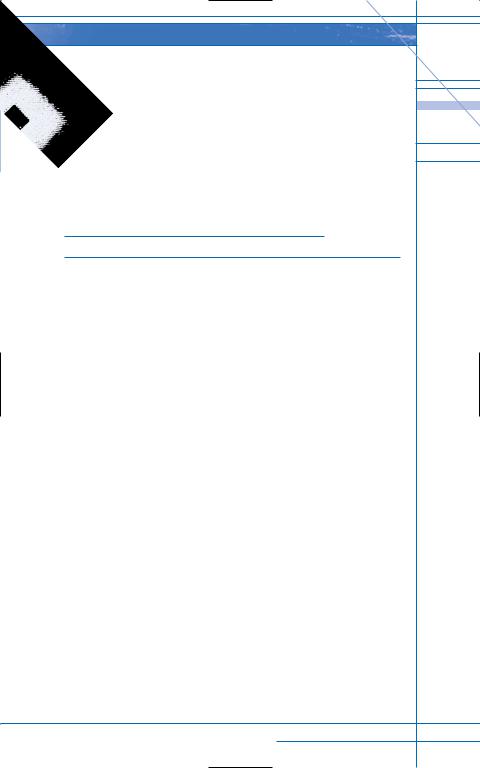
This Structure is very plot driven. Just as a roller coaster moves people around the track—and not vice versa—the events of a Roller Coaster plot move the story forward—not the characters.
The characters are compelled to react to the events around them because failure to do so would mean disaster. They are at the mercy of the story events and have virtually no time to think things over. They can formulate plans of action but they are not able to stop the events from happening. They are only able to deal with events once they are already in motion. (They can’t keep the Villain from planting a bomb, but they can try to stop it from going off.)
The Roller Coaster Ride Elements
ACT I TRADITIONAL ELEMENTS
•Setup
•Hook
•Serious Problem
•Main Characters
•Villain
•Turning Point
ACT I NEW ELEMENTS
One of the major elements of the Roller Coaster Ride is what is known as the Ticking Clock. There is often a sense of urgency in this type of story structure to keep the story moving forward and the reader on the edge of her seat. For example, in one hour the bomb will go off, killing a lot of innocent children. Can the hero find the bomb before then?
There is an Extremely Major Problem at Stake that is usually Life or Death. This story structure is very plot driven, with little time to explore the characters and their inner feelings when they are racing against the clock. So the problem has to be strong enough to carry the story forward and hold the reader’s interest.
Act I ends with a Mini Climax of its own and starts to build tension again.
There is not much time for Mood and Theme to be presented, at least not in depth. Readers usually know going in that they are going to be taken on an action ride. Instead
The Roller Coaster Ride |
35 |
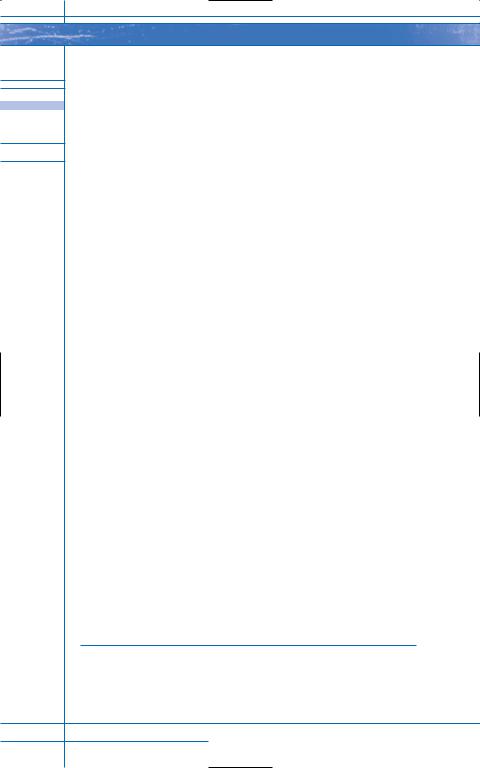
the Villain and his crazy way of thinking or acting can be shown to set up what he is capable of doing. Think of the movie Speed.
All subplots are directly influenced by and connected to the main plot. Just as all supporting character stories are related to the main plot, all other subplots should also be related to the main plot. This is the best way to keep the tension moving. Think about Jurassic Park. Even the setup and introduction of characters relate to the events of the story. When we first meet the paleontologists they talk about the raptor’s hunting strategies. This foreshadows the disaster to come when they meet a real raptor face-to-face.
There may be several storylines going with different Supporting Characters. Again, these storylines all relate in some way to the main plot events. For example, if a bus filled with people is hijacked, the Supporting Characters will either have family and friends on the bus or they will be involved with rescuing those people somehow. We don’t have time to learn about their hopes and dreams. To deviate from this by presenting a subplot entirely unrelated to the main plot would just slow the story down.
All characters must be introduced in Act I so the plot can do its job and take off.
ACT I QUESTIONS
•How many Main Characters and Supporting Characters will you have in the story? Are they all introduced here?
•How will you introduce the Villain? What do you want the reader to know right away about the Villain? How will you show it?
•What does the Main Character want? How do the events of the plot cut short his true plans? (For example, in Independence Day, Will Smith just wants to be with his family and live a normal life. In fact, when he catches an alien, he yells that he should be “relaxing at a barbeque right now.”)
•How soon will the time element come into play?
•How many Mini Climaxes will you have here? Are they all justified and organic to the story?
ACT II TRADITIONAL ELEMENTS
•Serious Problem Intensifies
•Temporary Triumph and Reversal (possibly)
36 Story Structure Architect
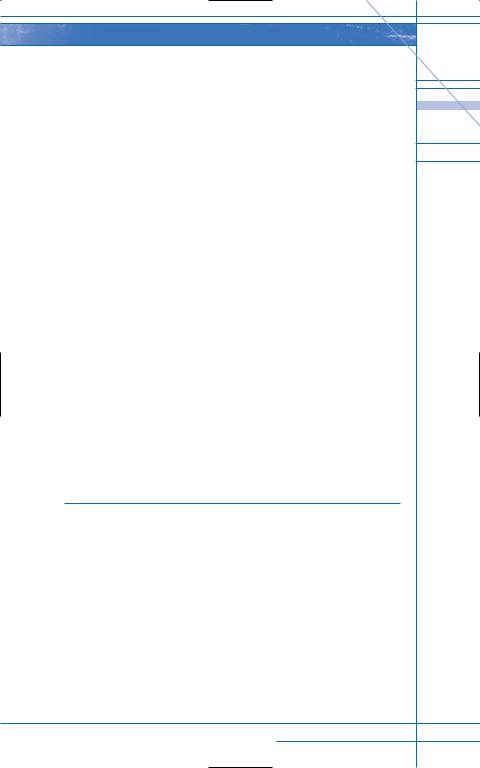
•Dark Moment
•Turning Point (possibly)
ACT II NEW ELEMENTS
There are several Mini Climaxes with beginnings, middles, and ends of their own. Perhaps the Main Character needs to rescue several people in different locations and each rescue is very dramatic on its own.
The Villain may become larger than life, pulling out all his resources to stop the Main Character from ruining his plans—especially if he is desperate.
If possible, the Stakes get bigger. The Main Character may think he is on the verge of reaching his goal only to find the goal has gotten farther away from him.
Secondary Time Elements may come into play. If the bomb is going off in one hour, maybe the Main Character has five minutes to find the one woman who can disarm it before she gets on a plane to London.
ACT II QUESTIONS
•How many Mini Climaxes will you have? Are they too similar to Act I or Act III?
•How will the Stakes get higher?
•How can you use what the Main Character cares about against him?
•How far will the Villain need to be pushed to be villainous? Is there any redeeming quality about him? Why is he doing what he’s doing?
•What kind of Secondary Time Element can you put in?
ACT III TRADITIONAL ELEMENTS
•Final Obstacle
•Climax
•Resolution
ACT III NEW ELEMENTS
Another Mini Climax or two takes place, each with its own beginning, middle, and end. One or two Dark Moments can happen between each Climax, setting in motion the next Climax to follow.
The Time Element intensifies. Perhaps the bomb diffuser made a mistake and now the bomb is going to go off in
The Roller Coaster Ride |
37 |
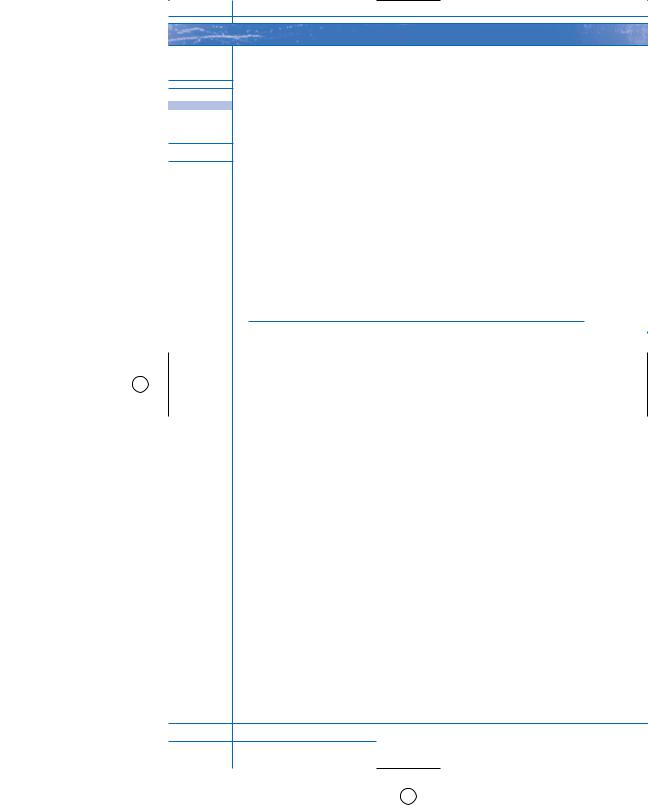
three minutes. Or the Villain got upset and changed the detonation time or some other rule of the game.
Subplots resolve themselves quickly or get all tied up with the final Climax. As the Main Character reaches his goal, everything else falls into place.
ACT III QUESTIONS
•Will you have several Mini Climaxes here? Or just one big one? Why?
•Should the Time Element intensify? Will it enhance the plot? Will it make things harder on the Main Character?
•How has the Main Character’s life changed from this story? Is his true Goal the same? Have his priorities changed in any way? (For example, in Independence Day, Will Smith decides to propose to his girlfriend because family has become the most important thing to him and he realizes life is too short to play around.)
•Will you leave any loose ends untied to foreshadow a sequel?
EXAMPLES
Jurassic Park, MICHAEL CRICHTON
Scientists clone dinosaurs to populate a theme park that suffers a major security breakdown, releasing the dinosaurs to wreak havoc.
Independence Day, ROLAND EMMERICH
Aliens come to Earth and their Goal is to invade and destroy. Fighting superior technology, a group of men try to figure out how to save Earth as the countdown to invasion begins.
Speed, JAN DE BONT
A young cop must save the passengers of a bus that has a bomb set to explode if the bus goes below fifty miles per hour.
38 Story Structure Architect
